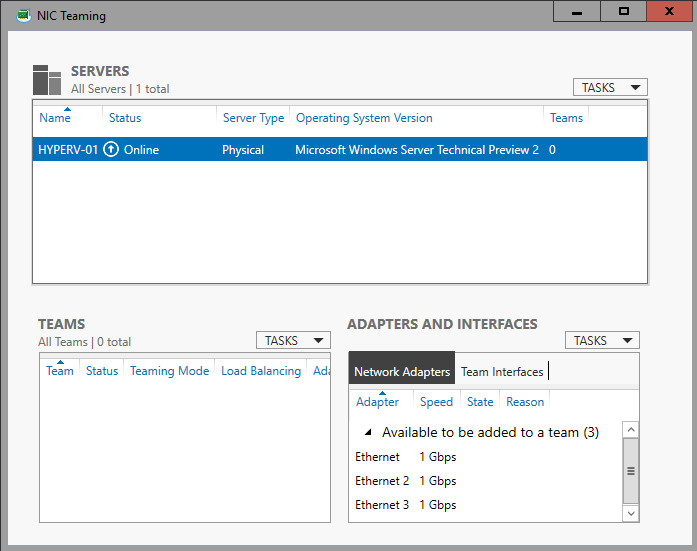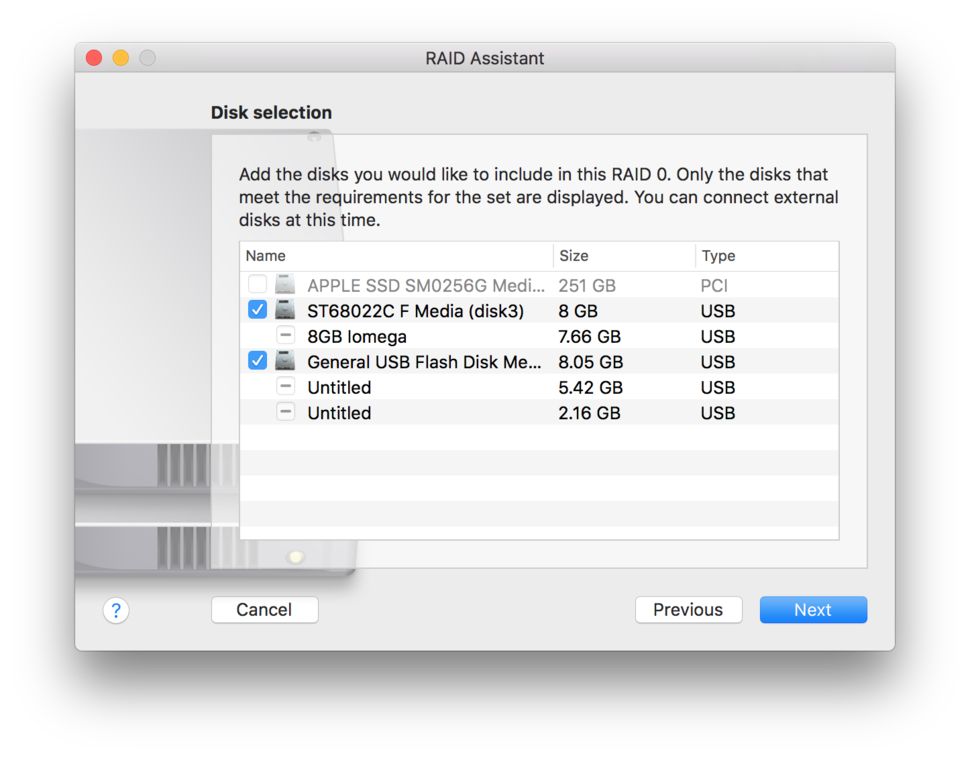Create a disk set using Disk Utility on Mac In the Disk Utility app on your Mac, choose File RAID Assistant. Select a set type: Striped (RAID 0) set: A striped RAID set can speed up access to your data. You can’t create a RAID. Striped (RAID 0) set: A striped RAID set can speed up access to your. Reinstalling Mac OS X or Mac OS X Server, you can use the Create RAID Set command and the Create Volume command to set up your RAID storage. To set up RAID sets and volumes manually: 1 Start up the computer using the Mac OS X or Mac OS X Server installation disc that comes with the computer. Nov 24, 2015 A deeper look at RAID is beyond the scope of this tip (for a quick overview, check out this video from Techquickie‘s Linus Sebastian), but the key point is that the ability to create and manage software RAID volumes — something that was possible in previous versions of Disk Utility — is no longer available in OS X El Capitan. In this example, we will be creating a Raid from the two 149.1GB drives. Click the RAID tab along the top of the window. Drag and drop the two drives into the blank window on the right. For 'RAID set name', type in the name of the volume that will appear on the desktop. For 'Volume format', select Mac OS Extended (Journaled).
Home > Articles
 ␡
␡- Set Up Software RAID

This chapter is from the book
This chapter is from the book
Set Up Software RAID
Before You Begin
Add a Newly Installed Hard Disk to the System
Partition a Hard Disk
Back Up Your Information
For high-performance systems such as Web servers for which disk performance and reliability are paramount, it's important for disks to be available in a redundant and fault-tolerant fashion. This is what RAID (Redundant Array of Independent Devices) provides: a scheme by which you can employ multiple hard disks in a set, mirroring or striping the data from each other, enhancing both access speed and reliability. The downside is that you have to buy at least three times as much disk storage as you need if you don't use RAID technology; but for the kinds of high-reliability applications that RAID is designed for, the cost of hardware is a small concern compared to the need for redundancy.
NOTE
Key Term -RAID (Redundant Array of Independent Devices)—A technology in which multiple hard disks are harnessed in a set so that data can be stored redundantly (for maximum reliability in case one of the disks goes bad) or across multiple disks at once (to maximize the speed of access).
Setting Up A Software Raid Mac Pro
RAID is often managed by a hardware solution (an add-on card in a high-end system) but this solution is unnecessary with Mac OS X's built-in software RAID option. The procedure for setting up software RAID assumes that you have installed at least two separate disks in the system, in addition to the startup disk. (Yes, that means you need at least three hard drives installed in or attached to your Mac. That's why RAID is intended for high-performance applications only!)
Open Disk Utility
Open the RAID Pane
Drag Disks to the RAID Set
Select the RAID Scheme
Open the Finder and navigate to the Applications folder, then to the Utilities subfolder. Launch the Disk Utility program by double-clicking its icon.
First select an entire disk (not a volume) from the left pane of the Disk Utility window. Make sure that you're choosing one of the disks you want to add to the RAID array (and thereby protect its data redundantly or speed up its access with striping), not your Mac's startup disk. Then click the RAID tab to open the RAID setup pane.
The left pane of the Disk Utility window lists all the available disks; drag the disks you want to use as the redundant disks in the RAID array into the white RAID set box (do not select the same disk you chose in step 2). You can rearrange the disks into priority order by dragging them in the box, or delete disks from the set by selecting them and clicking the Delete icon above the box. As you add disks to the set, the estimated usable size of the array (depending on your selected RAID scheme) is updated dynamically.
NOTE
You must have at least two disks in the RAID set to create a RAID array; neither of these disks can be your startup disk. Creating a RAID array destroys all the data on all the disks you add to the RAID list. Be absolutely sure that you know what you're doing before creating a RAID array!
You can select Stripe or Mirror as the RAID scheme. Striping is a good scheme for enhancing access speed because it works by storing parts of the same file across different disks so that all the pieces can be read at once; striping also preserves all your combined usable disk space. However, striping doesn't provide redundancy. Mirroring copies the files across all the RAID volumes, so it does provide redundancy, but not the speed benefits of striping.
NOTE
Key Terms -Striping—A RAID data storage scheme in which parts of each file are stored on different disks so that they can all be read independently at the same time for increased access speed.
Mirroring—A RAID data storage scheme in which all disks in the array are identical copies of each other so that if an error occurs on one disk, the other disks can correct it.
There are 'hybrid' RAID schemes that combine the benefits of both striping and mirroring; however, you must connect at least three RAID drives to your system to use this hybrid RAID scheme, and the scheme isn't supported by Disk Utility (which is, after all, designed for consumers with desktop Macs, rather than the high-availability server applications that use high-level RAID schemes). Professionalt have to worry about it any more.
Setting Up A Software Raid Machines
Related Resources
- Book $55.99
- eBook (Watermarked) $55.99
Raid System For Mac
- Web Edition $55.99